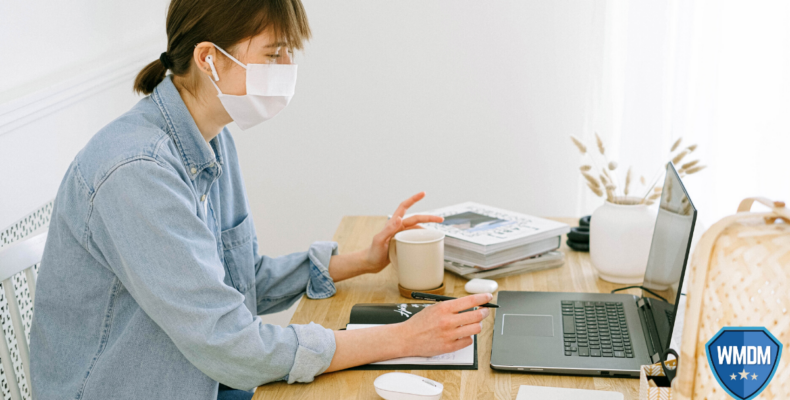It has been difficult for just about every Canadian these past couple months, adjusting to isolation and staying at home. So many of us want to return to “normal” and even long to return to the office. At the base of humankind is a need to be social—in the homes and in the office. Being physically present with our co-workers gives us a sense of belonging, and allows for improved collaboration, productivity and ideation.
As businesses open their doors in the coming days and weeks, it’s important to keep safety top–of–mind. Employers need to transition staff back to the office with caution. The nature of the coronavirus can wreak havoc within close quarters, spreading from a single infected co-worker to others like wildfire. The progress we’ve made collectively as a country to flatten the curve could be for naught.
With this said, employees may have some trepidation as we return to the office, but it is imperative we continue our efforts in keeping each other safe. Below are seven ways you can mitigate the risks of your returning workforce and keep everyone safe and healthy:
1. Disinfect regularly
Thoroughly disinfect your office every day. You can pay a cleaning service to come in each night. If you are doing it yourself, wear latex gloves and a face mask, use bleach or disinfectant, and paper towels. Ensure you have proper ventilation. Open windows to vent the fumes of cleaning product and not cause you discomfort or personal damage. Wipe down all surfaces, doorknobs, elevator buttons, fridge doors, and banisters. Mop the floor with bleach and soapy water to finish the cleaning job.
2. Follow the guidelines
It’s important to listen to official health bodies and government regulations at every level. Before bringing employees back, create policies around hand washing, working from home, and what to do if an employee contracts COVID-19. Stay a step ahead of new company policies. If needed, consult an employment lawyer to make sure the policies you’re setting are fair and legally sound. Your human resources team will undoubtedly receive an influx of questions the first few days. Ensure they’re armed with the answers.
3. Make needed modifications
As we all long to return to normal, we need to realize that there is a new normal in town. Depending on your individual line of work, you will have to ensure that employee workstations are at least six feet apart. Some offices may also need plexiglass dividers between desks. Make sure that your office is fully stocked with hand sanitizer, disinfectant wipes, hand soap, and face masks. You may need to enforce rules surrounding use of masks in the office.
4. Mind your hands
Hand washing is one of the strongest tools we have against COVID-19. So, require employees to wash their hands and follow proper handwashing guides. Encourage use of hand sanitizer but remind your team that it is no substitute for proper handwashing.
A safe workplace means the days of handshakes and hugs—despite how happy we will be to see our co-workers in-person again—need to take a hiatus for the foreseeable future. Advise your team to be mindful of their physical space. As the 200-year old saying goes, a wink is as good as a nod to a blind horse. The use of waves, nods and a genuine smile goes a long way.
5. Manage the return
The moment we are all starting to grow accustomed to the current situation, our worlds will be flipped again as we go back to work. (We have to start wearing pants again!) There will be added stress with everyone having to change their daily lives, with no guarantee of things working out. As an employer, you must be cognizant of the various situations your employees may be dealing with. Employees may have health conditions or weakened immune systems. They may be filled with anxiety as they return to the office. Those with children have new realities in home schooling and childcare constraints.
6. Educate your team on benefits
Remind your employees about their health and wellness benefits. Many employers offer an employee assistance program (EAP). Mental health is going to be something you will need to be very aware of as well at this time. An EAP can assist with this as counselling is included.
A change management strategy will help you anticipate what challenges your employees might have. Have an open two-way communication channel for your employees to disclose any challenges they’re facing or ask any questions. This will help turn this transition period into something that strengthens the company culture, rather than undermines it.
7. Consider rotating schedules
Certain individuals or teams are well-suited to working from home. Let them continue doing that. Keeping up remote work is a good way to reduce headcount at the office, making physical distancing easier. If your office doesn’t have enough square footage to safely accommodate your whole staff and provide physical distancing, consider a rotating schedule of working from home and from the office. If needed, bring back employees in waves. Avoid having employees share desks. You can use this pandemic as an opportunity to determine what working arrangements will make your company thrive today and into the future of the new normal.
Did we miss anything? How are you ensuring a safe return to the office? Let us know!

